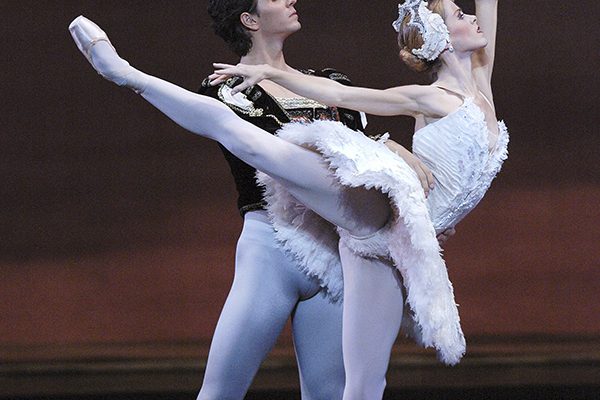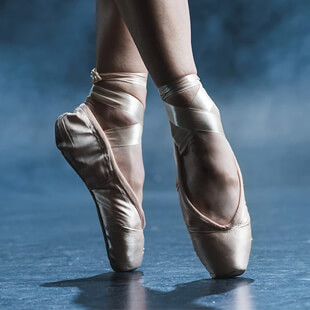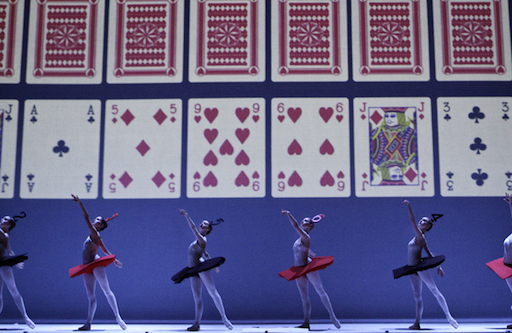A homecoming, a tantalizing taster and a farewell celebration highlighted The National Ballet of Canada’s triple bill, which opened at the Four Seasons Centre on February 29. The electrifying homecoming belongs to the Canadian choreographer Crystal Pite, who debuted her new work Angels’ Atlas. While Toronto may not be Pite’s home, it is certainly where she got her big break. In 2009, the then rising star catapulted onto the international stage with Emergence, an original work for The National Ballet of Canada. Eleven years later, she returns to the company as an internationally renowned contemporary choreographer.
Pite is known for her large ensemble-driven works, and Angels’ Atlas is no exception. Using a cast of thirty-six dancers, she carves riveting sequences that evoke both chaos and control.
She draws inspiration for this piece from her husband and set designer, Jay Gower Taylor, who, along with the lighting designer Tom Visser, creates a stunning set using refracted light. The result is an eerie backdrop that is reminiscent of a cosmic nebula. Angels’ Atlas is a meditation on this motion of light.
The ensemble movements elicit a mercurial quality, such as in the deceptively simple death sequence. One by one, the dancers gradually decay into the ground, generating extended shapes and angles as their bodies gently cascade onto each other. At other times, the sequences are in stark synchronicity. Paired with Owen Belton’s original electronic music, which sounds much like radio interference, the dancers are arranged in precise rows performing almost ritualistic movements, with their taut hands pulsing in front of their faces while they lunge forward with their shoulders hunched towards the ground. This contrast of styles, performed on a colossal scale by the ensemble, is enrapturing.
Angels’ Atlas, however, is not without its flaws. When the piece morphs into solos and duets, it loses its energy. Rather than the movements consuming the audience’s attention, the soloists are consumed by the set. Nancy Bryant’s black costumes blend with the floor and make it difficult to spot the dancers’ legs. Combined with Pite’s small and constraining choreography, composed of hand gestures near the face, Heather Ogden and Harrison James look diminutive on the sparse stage.
In addition, there are moments when Pite’s frantic choreography, filled with leaps and convulsive movements of the head, is at odds with the music, particularly Tchaikovsky’s Hymn of the Cherubim and Morten Lauridsen’s O Magnum Mysterium — the two introspective choral pieces that flank Belton’s composition.
Nevertheless, the world premiere received a rousing response from the Toronto audience, in a similar way that Wayne McGregor’s Chroma was received upon its Canadian premiere in 2010.
Like Pite’s piece, McGregor’s avant-garde creation focuses on the idea of light and colour, but in a paradoxical sense. In Greek, chroma refers to colour, or the purity of it. Yet, John Pawson’s cubic white set has anything but colour. Rather, the colour in this piece comes from McGregor’s striking choreography — which will be on display once again later this year in his new full-length work MADDADDAM, based on a trilogy of books by Margaret Atwood.
The ten dancers in Chroma contort their torsos to almost back-breaking extremes to create beautiful lines and arches. And there is a percussive beat to his choreography that consistently drives the work forward, accompanied by moments of dissonance and consonance. Dancers hold rigid tableaus before bursting into repurposed entrechats. The whole ensemble artfully conveys the contrasting lyrical and fanfare sections in Joby Talbot’s electronic score. But the standout dancer was the second soloist Siphesihle November, whose energy level and jumps were a step above the rest.
The brightest light of the evening, however, was that of Greta Hodgkinson, whose luminous career as a principal dancer came to a close after she portrayed the titular heroine in Marguerite and Armand, a company premiere. The traditional ballet is based on Alexandre Dumas’s nineteenth-century novel La Dame aux Camélias and follows a dying courtesan who recounts her relationship with her lover, Armand. Frederick Ashton’s 1963 choreography of this problematic girl-meets-guy tale is in desperate need of an update — the way Marguerite grovels at the feet of Armand’s father (Piotr Stanczyk) is cringeworthy — but it remains a star vehicle for its prima ballerina.
Hodgkinson is the epitome of grace. Her Marguerite floats exquisitely across the stage in the arms of Guillaume Côté’s regal Armand during the first pas de deux, which features multiple lifts. As Zhenya Vitort’s melancholic performance of Franz Liszt’s Piano Sonata in B Minor gets heavier and darker, Hodgkinson captures the emotional nuances of Marguerite as the courtesan slowly rides into the sunset. Her shoulders sag, but her head remains tilted to the sky, with an air of dignity and pride. It’s a beautiful farewell for Marguerite. And Hodgkinson.




